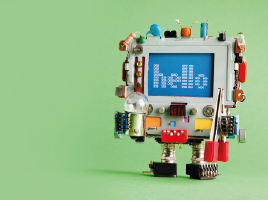ERP News – worldwide – erpnews.com – The manufacturing of the future has already arrived for production worker Barbara Civettini. “Our routings used to be in paper form, so whenever there was an unexpected change, the team leaders had to reprint the entire thing each time,” she says. “There was no such thing as a quick update.” Today, Civettini no longer looks at printed notes for instructions, but at her computer screen.
Even in the 21st century, at companies both large and small, there is much room for improvement in manufacturing processes. This is one of the aims of the Sense & React research project co-funded by the European Union. The goal was to develop an advanced and intelligent technology that knows exactly who needs what, where, and when in a production chain.

Under the leadership of Patrik Spiess, SAP colleagues from Strategic Projects worked together with several companies and institutions to help companies adopt technologies of the future. “Working with experts from other sectors and countries was a great experience,” says Spiess.
Role Concepts and Real-Time Information
Together with his colleagues in Germany, Spiess designed the infrastructure and an adaptive user interface (UI) for the Sense & React prototype.
In Italy, at one of Europe’s biggest washing machine manufacturers, employees used to have to adapt production plans manually for changes and then reprint them, costing valuable time. Now though, the company has one central system. Sophisticated role-based access control means that its employees can call up the information they need immediately rather than having to wade through vast amounts of data.
The system provides each user with the exact information they need. Supervisors can make changes using their mobile devices and the system adapts the data for these changes without it locking other users out momentarily. It does this by comparing roles and identifying which data each role requires.
In combination, data from ERP, weight and motion sensors, and radio frequency identity (RFID) chips can be used to alert users to potential bottlenecks or errors in the production process. This capability helps save time and avoids miscommunication between the departments involved, which in turn improves production quality and saves costs.
“We also applied for a patent,” Spiess adds casually. The new UI developed by SAP not only displays apps containing relevant information side by side, but also automatically brings the apps with the most important information to the front. The UI was patented and there are now plans to integrate it into existing SAP products.
“We have already added one such supplier scenario to SAP S/4HANA,” says Spiess. It displays only the suppliers from whom a buyer regularly orders goods or services for their particular job, rather than all the company’s suppliers.
The prototype was also tested at a small Portuguese shipyard to demonstrate that this technology is also useful for small companies. “It is available both on-premise and in the cloud,” Spiess notes.
Research projects such as Sense & React are perfect examples of how technology is moving toward proactive systems that really make life easier for users. The trend is clear: Out with paper, in with Industry 4.0.
Photo via SAP TV



